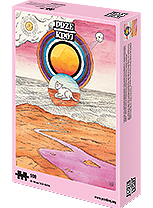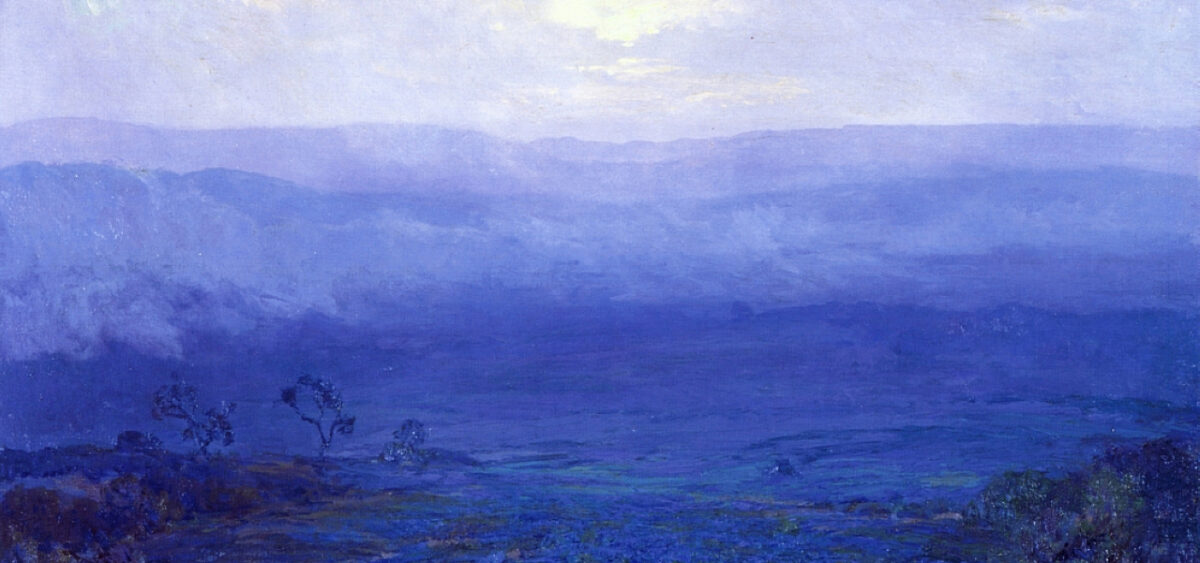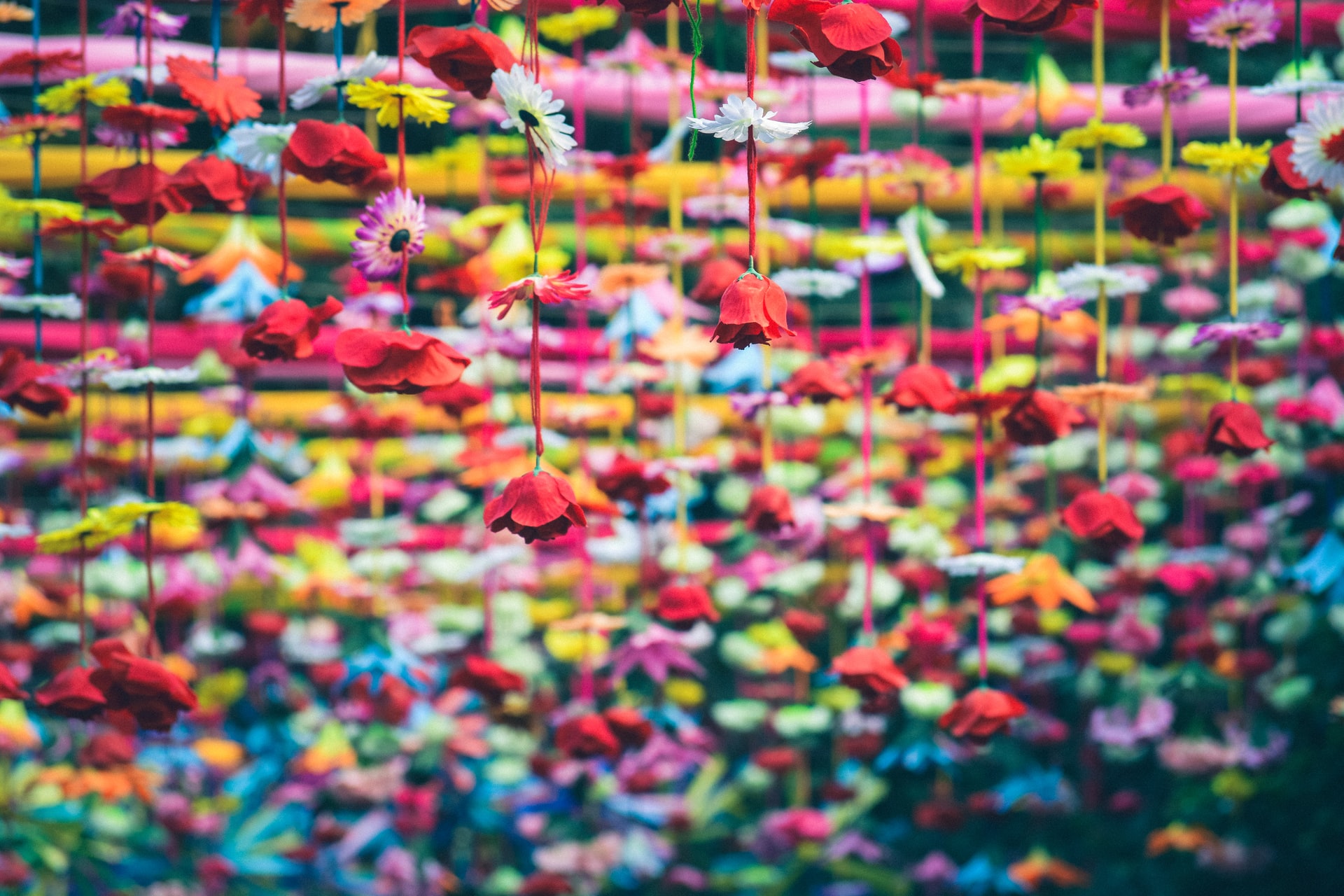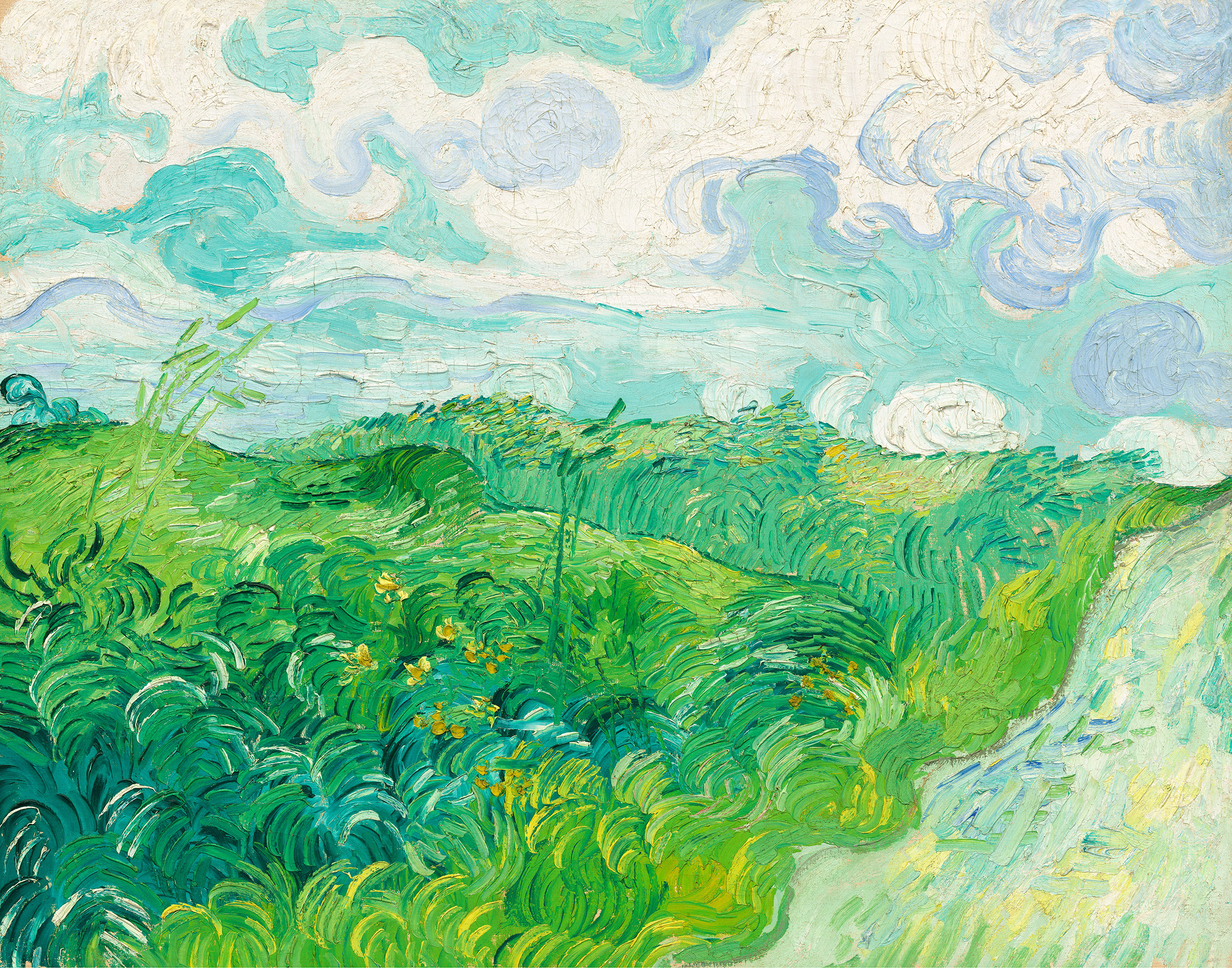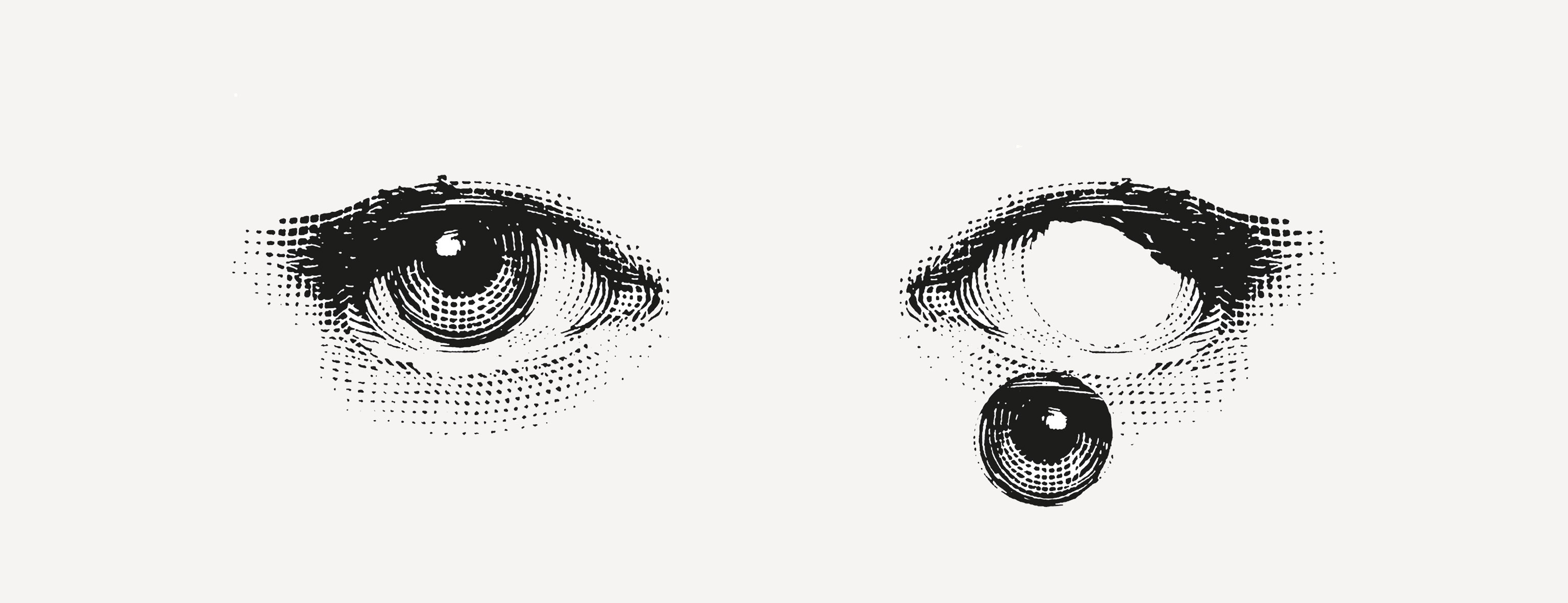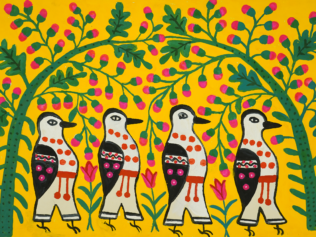
Blue is the color of eyes, the sky, and the ocean. It is hard to ignore its presence in the world, yet it wasn’t always taken into account linguistically. In art it is one of the primary colors, but the path to discovering an ideal and relatively affordable pigment did not follow a straight line. It seems that there is still a lot to discover.
In 1969 Brent Berlin and Paul Kay posited the so-called principles of the universality of basic color terms. Their work started a fascinating debate on relativity in color perception in various cultures, thanks to which there are now many examples of how it impacts the naming and categorizing of colors (e.g., dividing shades into warm and cold). Moreover, it turns out that this relativity also influences the seemingly objective ability to distinguish between colors. The fact that in the language of a given culture it is possible to name colors unknown to other communities enormously increases the ability of that culture’s members to distinguish between these colors.
One of Berlin and Kay’s most interesting ideas concerns the development of words describing colors. The researchers came to the conclusion that such words tend to be created in a particular sequence. The least developed languages only distinguish lexically between black and white. This seems logical—after all, the contrast between darkness and light is one of the strongest sensual sensations one can register. Adding a third color category almost always means a word for red—the color human eyes perceive as the most vivid. The next stages in language development consist of including green and yellow, then blue, brown and—at the very end—purple, pink, and orange.
Blue—a seemingly ubiquitous color whose materializations on a truly planetary scale include the sky’s dome and the azure depth of the ocean—is not of primary need. In most cultures it was born later—and there are languages where there is no blue at all. It was a great surprise for me to discover that in many ancient languages the color was unknown. This is why in his Odyssey Homer wrote about “the wine-dark sea,” consequently avoiding evoking blue, which is also absent from the Iliad.
The Exotic Color
It is hard to believe that this peculiar reluctance to acknowledge the existence of blue results from a dislike of the color. It is a common affliction, as if the impossibility of being named or differentiated from green was somehow a universal trait of the color itself.
Observing the surrounding world can help justify to a certain extent the exceptional and exotic character of blue. There are relatively few minerals with a truly vivid blue hue. Even if they are colored blue, it is often impermanent, susceptible to the gluttony of oxygen from the atmosphere and the erosive activity of water. Among living organisms blue is even more difficult to find. A negligible percentage of plants and animals can boast possession of its vibrant shades. The disproportion is shocking: the deposits of biological diversity are full of reds and oranges, as well as yellows, browns, and blacks. Green, the most ubiquitous hue, spills everywhere where there is even a trace of autotrophic plant life, permeated with the most extraordinary of all pigments—chlorophyll. In this flood of colors blue and its close relatives—violet and purple—are part of the minority avant-garde, and every meeting with a rich blue is a visual shock, as if the color had no right to appear in the predictable patterns of the soft, organic world.
The reasons for blue’s fascinating extraordinariness in the biological world are its rarity and the biochemical complexity of pigments able to manufacture the color. In fact, in nature blue is most often found in the plant world. Take, for instance, the fabulous blue forget-me-nots, hydrangeas, and cornflowers, or the deeply azure gentians, bellflowers, and clematis. The color of these flowers is mostly the effect of anthocyanins—pigments with a strong coloring from deep red to intense blue and violet. Anthocyanins are very common: they lend color not only to flower petals but also to fruit such as bilberries and vegetables including red cabbage.
The latter perfectly shows the anthocyanins’ effect on plant cells. Despite its name, red cabbage is actually purple, and once boiled in water it takes on a bluish-purple hue. It suffices to add a few drops of vinegar for the leaves to turn a flaming purple. This is how anthocyanins work—their molecules are like natural litmus paper, changing to red in acidic environments or blue in alkaline environments.
Anthocyanins have one more property: they are relatively sensitive molecules that get easily annihilated by the oxidizing activity of various substances, or via contact with various enzymes. This is where the problem lies.
The Unobtainable Color
Compared to plants, animals are much less talented dyers. Their color palettes are dominated by reds, browns, and blacks—colors that are made thanks to truly animal pigments, melanins. Some creatures can leave the monotony of brown and black, for example by dyeing their feathers or skin with yellow and orange carotenoid pigments (closely related to the orange carotene that fills carrot roots and the bulbs of sweet potatoes). In each case, however, animals need to absorb these additional pigments from their food—they are usually unable to crack the pigments’ biochemistry and synthesize the necessary colored molecules in their cells. Using the same trick in the case of blue—devouring the necessary amount of sapphirine anthocyanins—is not feasible because of the abovementioned sensitivity of these molecules. This is one of the reasons animals have so much trouble with the color.For them it is an unattainable luxury, which they can neither synthesize nor steal from other, truly blue organisms.
Yet neon blue butterflies exist, like the morpho whose metallic, surreally-turquoise wings can be spotted in tropical jungles. Likewise blue tits, European rollers, and kingfishers—all dressed in enough shades of blue that one would probably struggle to name and classify them all. In principle, everything is in order—they really are blue. Indeed they boast one of the most splendid hues one can find on the tree of life.
At the same time, these are some of the most perfidious, dexterous mystifications that nature has ever invented. Because even though kingfishers, superb fairywrens, and purple emperors have awe inspiring colors, these are just cunning tricks, masterly shticks of biology playing with physics. These are azures, turquoises, and blues that are impossible, non-existing, illusory. The shades desired, dreamed by each of these creatures, had to find a way to come into being—despite all the biochemical difficulties and the clear fundamental inability of animals to produce the tiniest spot of blue.
As a solution, they chose to tease the world. Instead of using a pigment which cuts out one color from the spectrum, these animals shape their drab gray tissues on the most basic, microscopic level. They embroider tiny nano-lace from their feather’s keratin or decorate with tiny reliefs the little chitinous scales that butterfly wings are sprinkled with. Upon meeting such structures, light is refracted in a particular, carefully planned way. Even though the light does not encounter any colorful molecules on its way, guided by the nanoscopic micro sculptures, it loses the reds, yellows, and greens. What is left gets refracted on the surface of the bird or butterfly. The perfect illusion, a forgery sanctioned by the laws of physics.
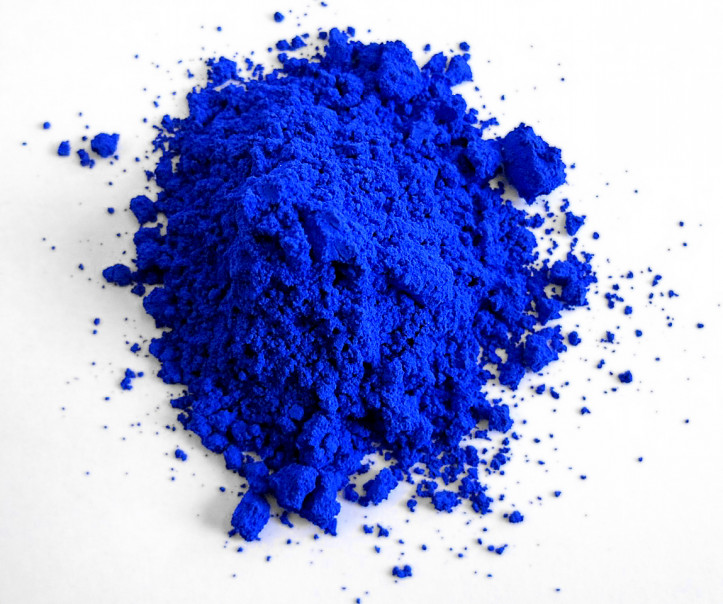
The Accidental Color
The ephemeral nature of blues in nature has always made it difficult for artists to use the color. Simply squeezing or grinding an appropriately colored plant would not do. Pigments extracted in this fashion weren’t opaque enough and—most importantly—did not last. Used as paint, they turned into blobs of dun or dirty yellow that had nothing to do with blue.
If a good, opaque pigment in this shade was found, it turned out to be problematic to use. One of the oldest known pigments is the so-called Egyptian blue, or in chemical terms, calcium copper silicate. It has a beautiful color, but depending on the exact composition and the conditions it is subjected to it can change its shade (e.g., turn green). Besides, Egyptian blue is far from the deep azure painters desired.
Their desire was partially satisfied by another pigment—the incredibly expensive ingredient of the natural version of ultramarine, lapis lazuli. The baroque and Renaissance skies and the clothes of many saints in paintings from these periods (particularly the coats and scarves of Mary) often owe their deep navy to the mineral.
Quantities of lapis lazuli big enough to enable the manufacturing of high quality ultramarine can be found only in a few places—in Afghanistan, the region of Lake Baikal in Russia, and the Chilean part of the Andes. The monopoly on the mining of the stone that existed until the 19th century—when the method of producing synthetic ultramarine was invented—made it one of the most expensive pigments in the history of painting. Even though artists usually accepted the horrendous costs, an intensive search for substitutes and for new methods of the chemical production of permanent blue pigments from the cheapest possible ingredients was in progress. Most of the efforts failed and artists would probably still depend on the so-called “Afghan gold” had it not been for an extraordinary coincidence.
In 1706 the German dyer Johann Jacob Diesbach was working on improving the manufacturing process of red cochineal dye. He mixed potash (potassium carbonate) with copperas and cochineal, expecting the precipitation of the familiar carmine residue of cochineal red. Instead, the effect was a vivid blue dye. The reason was the potash Diesbach used. As the dyer had run out of potassium carbonate, he borrowed some from Johann Dippel—a theologist, occultist, and alchemist. Diesbach had no idea that the potash was polluted with animal blood—it must have been because of Dippel’s experiments. At a heightened temperature, heme (a red pigment containing iron, and responsible for oxygen transportation in animal blood cells) reacted with potassium carbonate, yielding a small amount of a compound called potassium ferrocyanide.
It is this substance—mixed with the copperas Diesbach used—that yielded the intensely blue dye. Johann Leonhard Frisch, for whom Diesbach worked, called it “Prussian blue.” The newly discovered pigment quickly dominated the dye market. For a long time it became a fixture on painters’ palettes as a wonderfully blue and cheap substitute for the exotic ultramarine.
The story of the accidental blue, discovered thanks to the carelessness and perceptivity of 18th-century chemists, could end here. But history likes to repeat itself. When in 2009 Andrew W. Smith, an MA student working at the lab of an American chemist, Mas Subramanian, was taking out the melting pot from the oven after another round of experiments, he did not expect he’d contribute to inventing a new synthetic blue pigment, the first in two hundred years.
Subramanian and Smith were investigating the electrical properties of substances made by the sintering of various metal oxides. One of the experiments involved fritting oxides containing atoms of manganese (Mn), indium (In), and yttrium (Y). In previous experiments the resulting sinters were gray or black. This time, however, Smith took out of the oven something that was vividly azure. Accidentally, Subramanian and his student discovered a new blue pigment they called YInMn (after the metals it contains). The pigment quickly became an object of desire for painters—mainly because of the color’s purity, but also because of its opacity. Since YInMn is not a particularly marketable name, a new one was chosen in an international competition organized in 2017—bluetiful.
In a strange way the history of the unreachable, unnameable, accidental blue has come full circle, to the beginning of the history of pigments, when chemists were starting their search for a substitute for the exorbitantly expensive lapis lazuli. Because even though YInMn is the most perfect blue available today, 1.35 fluid ounces of the concentrated pigment costs over one hundred and seventy dollars. Perhaps in two- or three hundred years we can expect a new and cheap substitute for bluetiful to be invented. Fortunately, the repetition of history is likely to go hand in hand with the increasingly rapid development of chemistry. With a little bit of luck it will be a slightly cheaper yet still amazing blue.

Translated from the Polish by Adam Zdrodowski

